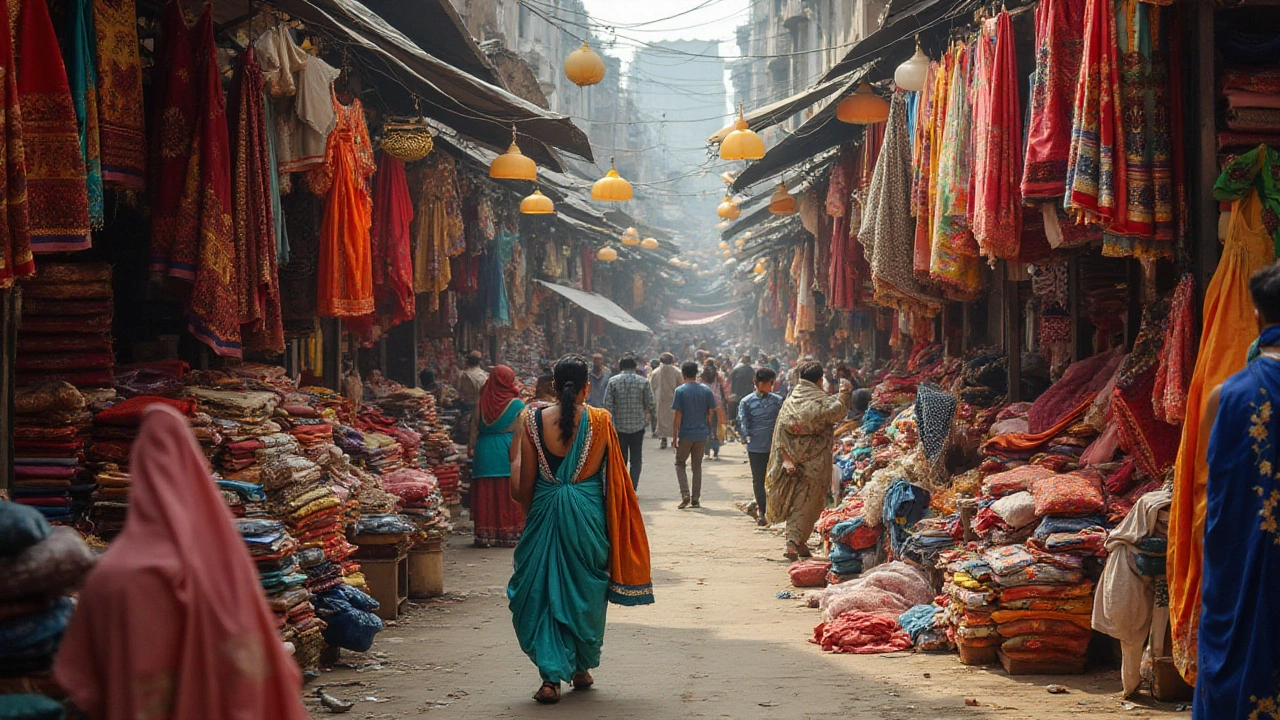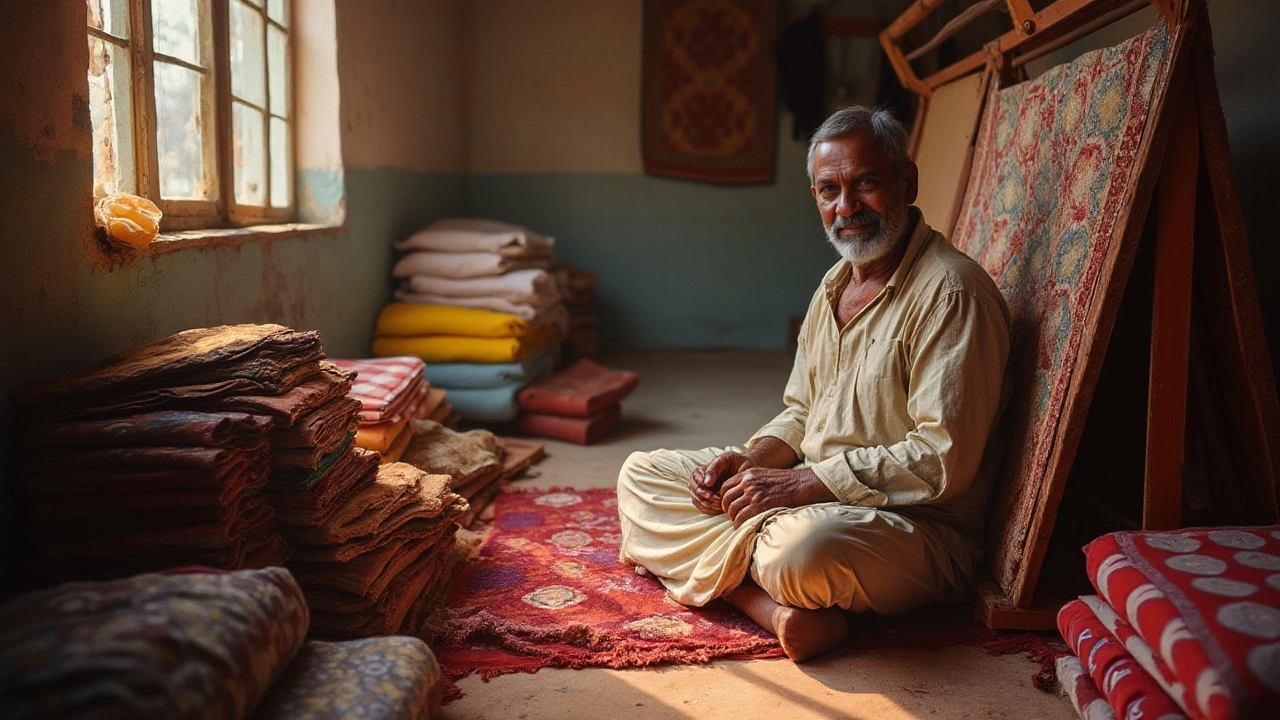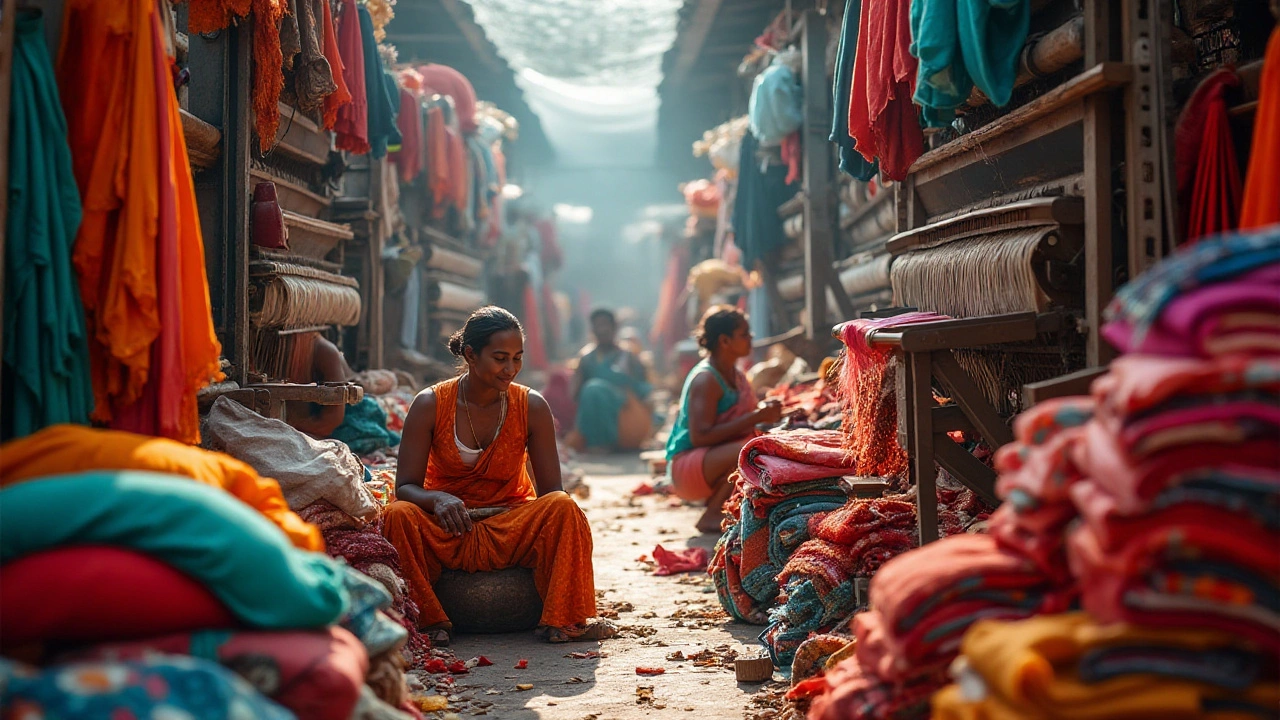India's textile industry is a vibrant tapestry of heritage and innovation, providing a wide array of fabrics that have found markets across the globe. Known for its intricate craftsmanship and quality, Indian textiles have been captivating the international scene for centuries.
Among the fabrics exported, cotton stands out as a predominant choice. It isn't just a fabric; it's a symbol of India's agrarian history and industrial progress. However, the textile narrative doesn't end with cotton. There's silk, jute, wool, and synthetic materials all contributing to this ever-evolving story. Understanding which fabric is exported the most unveils much about the cultural and economic dynamics at play.
This exploration into India's fabric exports offers more than just figures and data; it gives a glimpse into the traditions and innovations that drive this sector. From production hubs to the hands crafting these materials, each piece of fabric carries a story of its own.
- The Rise of India's Textile Industry
- Popular Fabrics Exported
- Factors Influencing Fabric Export
- Future Trends in Fabric Export
The Rise of India's Textile Industry
The history of India's textile industry is deeply woven into the fabric of its cultural heritage, tracing back over thousands of years. From the ancient civilization of the Indus Valley where cotton was first cultivated, to the vibrant bazaars of the Mughal era rich with silks and opulent woolen fabrics, India has been a key player in textile production. The artistry and skills passed down through generations have allowed India to emerge not just as a fabric producer but as a global textile powerhouse.
In modern days, the change began with the industrial revolution, which altered the landscape completely. This brought about new machinery and production processes that propelled India to become one of the largest fabric exporters. The opening of the economy in the early 1990s catapulted India's textile industry onto the global stage. Since then, the industry has seen a surge in demand for its products, fueled by advancements in manufacturing techniques and a burgeoning domestic market. Significant investments have been made to modernize production facilities, which has greatly enhanced the capacity and reach of Indian textiles.
The textile sector contributes significantly to India's economy, accounting for approximately 15% of the country's export earnings. A crucial source of employment, it provides jobs to over 45 million people indirectly through its affiliated industries. The geographical diversity of India allows it to grow a range of natural fibers, such as cotton and jute, while also producing silks and synthetic materials. This variety has made Indian textiles popular worldwide.
The range of Indian fabrics is as varied as its culture. Each region has its unique textile identity—Rajasthan is known for its vivid prints, Tamil Nadu for its luscious silks, and West Bengal for its elegant muslins. With this rich diversity, India has cultivated a reputation for quality and durability in the international market. "India's textile craftsmanship is unmatched," remarked Indian textile historian, Ritu Kumar, in a 2023 interview, highlighting the blend of tradition and modernity found in Indian textiles. Today, a garment made from Indian fabrics is not just a piece of clothing but a story of its maker's heritage.
Textile export from India has grown as global markets have increasingly recognized the value of what Indian manufacturers bring to the table. The adoption of sustainable practices and eco-friendly materials, driven by global trends and consumer demand, has further bolstered India's position in the market. Many textile manufacturers have taken steps to reduce their environmental footprint, aiming to align with international standards and expectations. These sustainable initiatives, combined with traditional crafting skills, create a resilient industry poised for future growth.
The Indian government has also put in place several initiatives to boost the textile sector, providing subsidies for modern technology, promoting exports, and fostering skills development. This collaborative effort between the industry and the government aims to make India a premium hub for textile and apparel sourcing. The National Textile Policy, among other programs, elucidates a vision where Indian textiles will continue to hold sway on the global stage through innovation and commitment to quality.

Popular Fabrics Exported
India's stature in the global textile market is heavily bolstered by its impressive array of Indian fabrics that are exported in vast quantities. Among the myriad options, cotton steals the spotlight as the most pivotal export. The reasons for cotton's dominance are manifold. For starters, India is home to vast expanses of fertile land, with climate conditions well-suited for growing high-quality cotton. This makes the production and export of cotton not only a tradition but also an economic backbone. Due to its softness, durability, and versatility, Indian cotton is highly sought after in markets across Europe, the United States, and Asia. Its role is not just a matter of economics but also of identity, linking India's ancient past with its modern aspirations.
Another key player in the fabric export arena is silk. Often termed as the 'Queen of Textiles,' silk is synonymous with luxury and traditional craftsmanship. The states of Karnataka and Tamil Nadu are renowned globally for their exquisite silk products. Historically, silk has been at the core of India's textile narrative, dating back to its famed trade routes. Indian silk, especially the types sourced from mulberry and tussar, is distinguished by its luster and vibrant designs, making it a staple for high-end fashion houses worldwide. The demand for silk saris, in particular, underscores the interconnectedness of cultural heritage and modern fashion trends, seamlessly weaving tradition into every thread.
Beyond these classic materials, there is a growing interest in more sustainable and eco-friendly textiles like jute. Known for strength and biodegradability, jute aligns with global calls for environmental consciousness. West Bengal is the epicenter of jute production, exporting to nations prioritizing green alternatives in their textile imports. This shift towards sustainable materials is not just a trend but a long-term transformation that reflects global shifts in consumer behavior. As such, these textile exports represent a fusion of India's rich resource base with contemporary sustainability principles.
Adding to the repertoire, synthetic fabrics are gaining ground, particularly in applications needing enhanced durability and ease of maintenance. Fabrics such as polyester and viscose are produced in significant amounts due to India's advanced manufacturing capabilities. Buyers in the West and Middle East favor these materials due to their adaptability and cost-effectiveness. The growth of synthetic fabric in the export sector exemplifies India's ability to cater to various global needs, from haute couture to everyday apparel. As fashion evolves, so does the spectrum of materials India offers, continuously reshaping the global fabric landscape.
"The Indian fabric story is one of both continuity and change, weaving ancestral crafts with futuristic fabric innovations," notes a leading textile analyst from the Apparel Export Promotion Council.
The combination of traditional and synthetic materials lays a robust foundation for India's textile export industry. As markets expand and evolve, India responds not only with quantity but with a creative finesse that honors its past while embracing the future. The resonance of India textile products in international markets speaks volumes about their quality and cultural significance. This ongoing dialogue between craftsmanship and modern requirements ensures that India remains a predominant figure on the textile stage.

Factors Influencing Fabric Export
The export of Indian fabrics is shaped by a multitude of factors, each contributing uniquely to the industry’s dynamic landscape. At the forefront are the raw materials, particularly cotton, which is the backbone of the fabric export sector. India, being one of the leading producers of cotton, enjoys an advantageous position in the global market. The quality of the cotton produced not only affects domestic production but also its international demand. Global buyers often seek high-quality, consistently graded cotton, which India produces in abundance. The climatic conditions, agricultural practices, and technological advancements in textile farming have a profound impact on the yield and quality of Indian cotton, thereby influencing its export potential.
Government policies also play a crucial role by facilitating or hindering fabric exports. Incentives, subsidies, and export duties are mechanisms through which the government can encourage the industry. Recent initiatives aimed at modernizing the industry, adopting sustainable practices, and investing in infrastructure have positioned India’s textile industry as a competitive player on the global stage. Various schemes like the Textile Upgradation Fund Scheme (TUFS) have provided necessary impetus to invest in modern technology, ensuring the industry remains on par with international standards. Additionally, bilateral trade agreements with other countries can open up or restrict market access, impacting export volumes significantly.
The global economic climate is another influential factor. Economic downturns can affect consumer spending power, subsequently causing a slump in demand for exported goods. Conversely, periods of economic prosperity often see an increase in demand for high-quality textiles and innovative fabric blends that India excels in producing. Changes in fashion trends also contribute significantly, as India has a rich tapestry of textile designs that cater to diverse markets around the world. Styles and demands evolve rapidly in the textile industry, and Indian manufacturers must remain responsive to these shifts to maintain export success.
"India’s diverse textile and apparel sector has a huge impact on the global market; continued investment and strategic innovation are keys to sustaining its lead," says Professor Anil Gupta from the Textile Research Institute.
The rise of sustainability consciousness globally has created a demand for eco-friendly and sustainable fabrics. India's age-old traditions of natural dyeing techniques, handloom production, and organic materials stand as assets in this regard. By tapping into these traditional practices, India is able to offer eco-friendly fabric options that align with global sustainability trends. Coupled with this is the adoption of modern technology that boosts efficiency while reducing environmental impact, thereby enhancing the global desirability of Indian textiles.
Additionally, the role of skilled labor cannot be overstated. The expertise of Indian artisans in weaving, dyeing, and embroidery is renowned worldwide. Many export-driven manufacturing units focus heavily on training and upskilling their workforce to maintain high standards of craftsmanship. Labor costs, availability, and productivity levels directly impact the competitiveness of Indian fabrics in the global market. The balance between quality and cost-effectiveness remains critical for maintaining a competitive edge in the export domain.

Future Trends in Fabric Export
As we step into a new era of technology and globalization, the future of India's fabric export seems poised for transformative changes. Throughout history, India has earned a reputation as a dominant player in the global textile market. However, what lies ahead for this burgeoning industry involves both opportunities and challenges. Emerging trends like sustainable practices are gaining traction, and the industry is embracing eco-friendly materials and production processes to cater to the environment-conscious global consumer. Amid growing concerns about climate change, textile manufacturers are increasingly looking to organic cotton and other sustainable fabrics as viable alternatives to conventional materials.
Technology also holds a prominent place in shaping the future of India's textile export industry. The advent of smart textiles—also known as e-textiles—offers exciting possibilities. These fabrics are embedded with digital components and electronics that enhance user interaction, including capabilities such as monitoring health metrics or providing lightweight heating. Innovations like these show great potential for creating new market segments and demand. Additionally, digital transformation through Industry 4.0 technologies promises to streamline the production process, enhance quality control, and improve supply chain management. Implementing such advancements can bolster productivity and reinforce India's standing in the competitive global marketplace.
Markets are also shifting, with Asia and Africa registering a growing appetite for Indian fabrics. Crafting strategic trade relationships with these regions could pave the way for untapped opportunities. The government's role is crucial in this endeavor, as policy reforms that promote exports and ease trade barriers can catalyze progress. There's a concerted focus on positioning India as a leader in textile innovation, aligning its export strategies with broader economic goals. A report from the Textile Association of India notes, "The roadmap to doubling textile exports by 2026 hinges on a convergence of quality, innovation, and government support."
The expansion into online marketplaces is another avenue worth noting. The rise of e-commerce platforms has democratized access to Indian textiles, offering even small manufacturers a global stage. It's a significant pivot from traditional retail methods, underscoring the need for adaptability in these digital times. Here, storytelling through branding can captivate international audiences by emphasizing the rich cultural heritage and craftsmanship inherent in Indian textiles. This narrative offers a unique advantage, resonating with consumers increasingly drawn to products that encapsulate authenticity and history. Such an approach is likely to sustain India's competitive edge and appeal within the global fabric industry.
